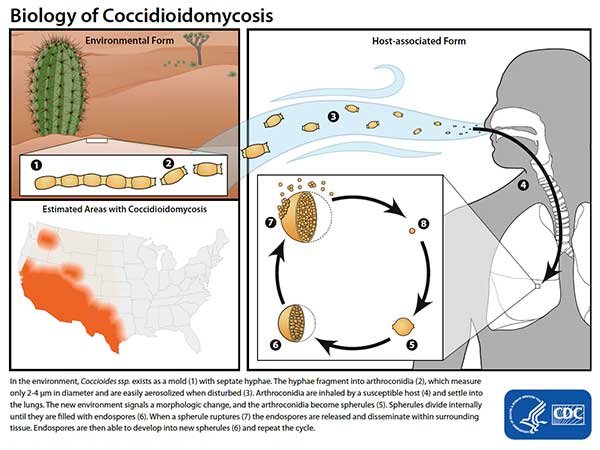Natural catastrophes like as fires, floods, and record-breaking heat waves in 2022 are obvious expressions of climate change; nevertheless, a number of other public health-related side consequences are considerably less visible, but equally alarming.

Consider a disease-causing fungus that has been growing in the soil of drought-stricken California and then billowing into the air.

It may be a grueling, frequently incapacitating illness with symptoms ranging from crushing headaches to sinus infections. Worryingly, once contracted, the condition has the potential to progress to meningitis.
Coccidioides needs hard, arid circumstances to survive. That means it has flourished despite the state’s numerous near-waterless years. Valley Fever instances have increased as Coccidioides has spread over California’s Central Valley.

Much of the western United States is currently quite dry, and climate change estimates indicate that the western half of the country will continue to be dry, which will encourage Valley fever.
Importantly, if the soil is not disturbed, the sickness will not necessarily enter the airways. However, any disturbance, whether it is a full-scale archaeological dig or a burrowing animal, will release the fungus from the soil into the air. They can then go around 75 kilometres from where they started.
Reference- The Guardian, Center For Disease Control & Prevention website, Futurism, Discovery Magazine






